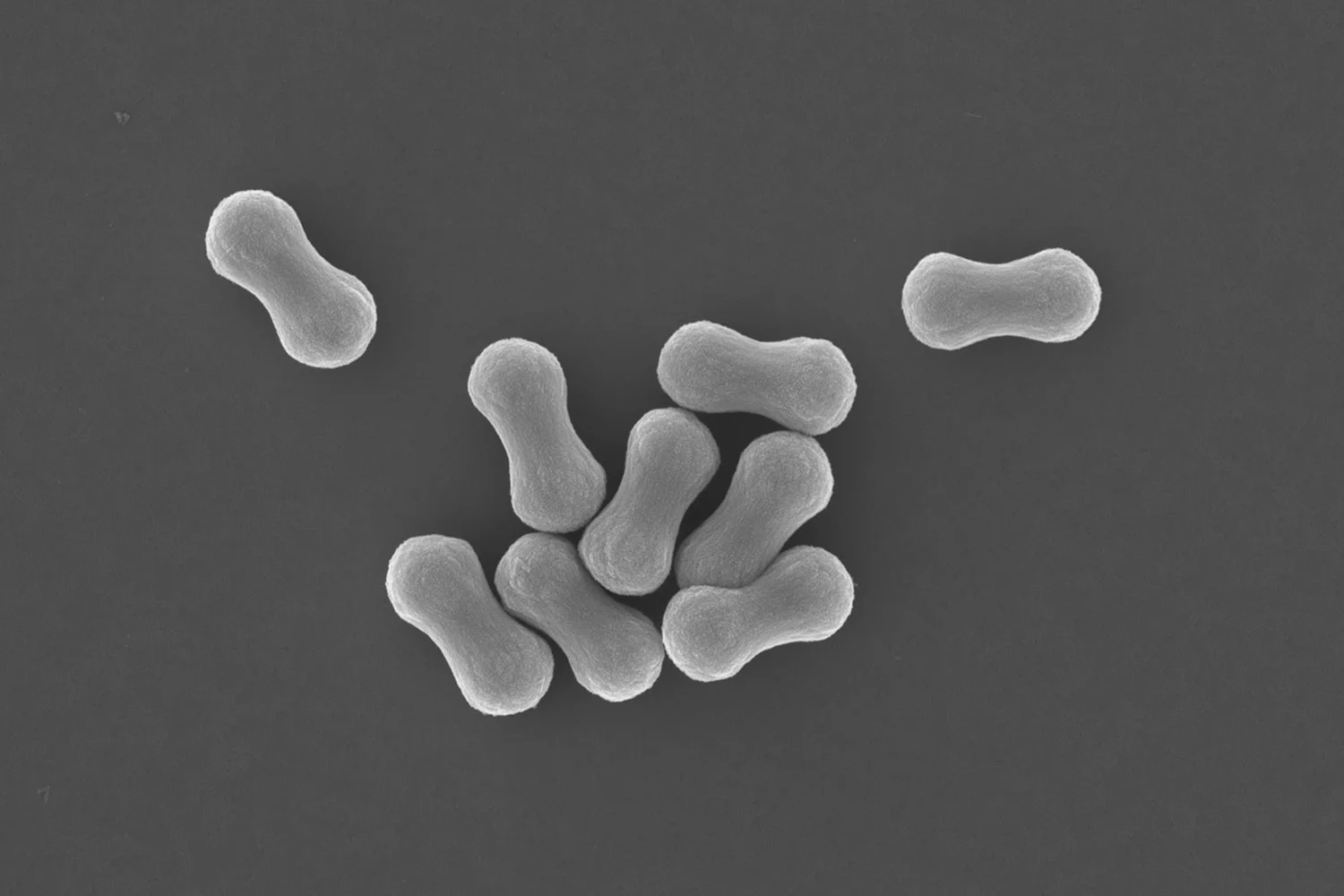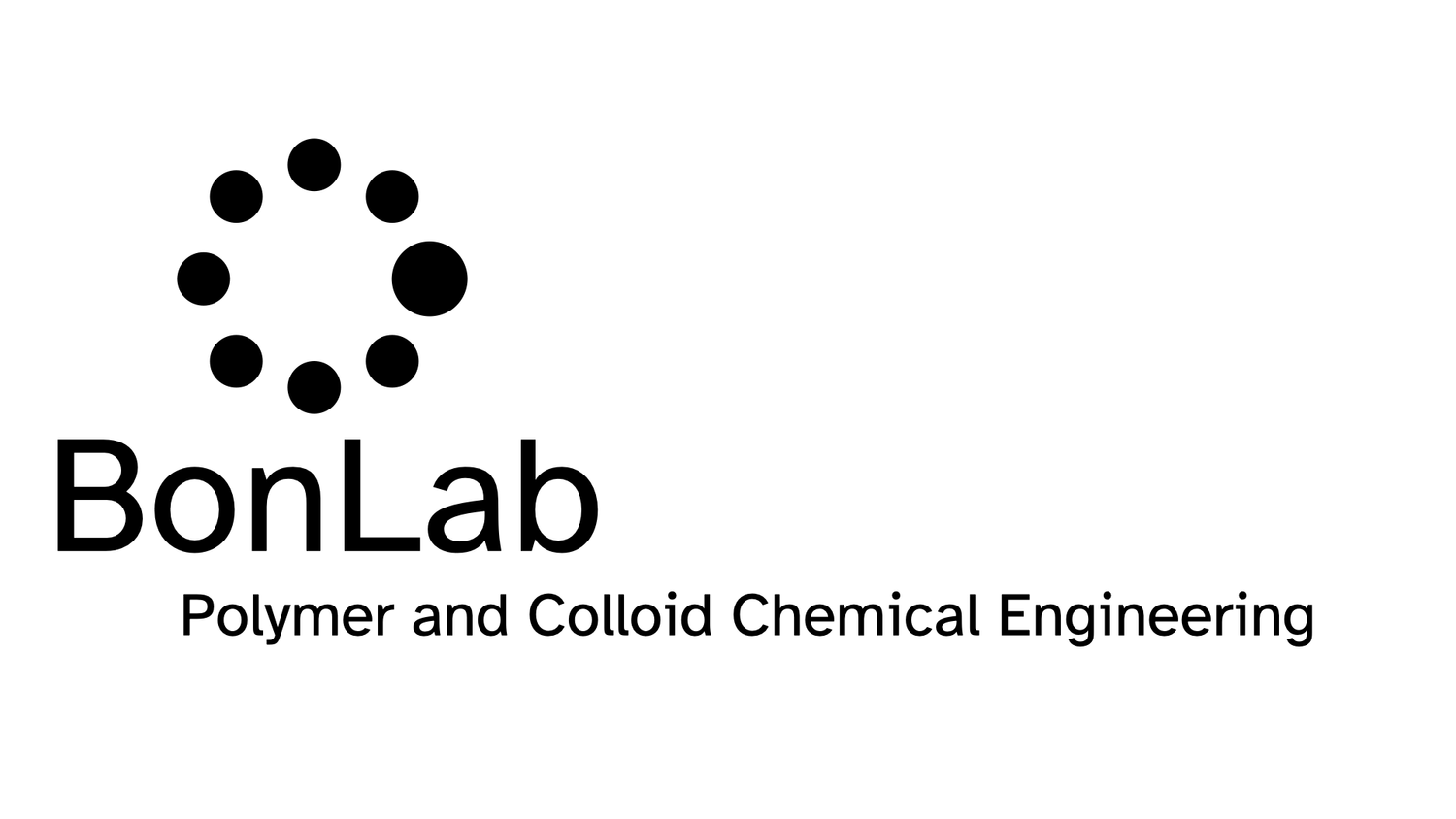
BONLAB BLOG
Thoughts
&
Scientific Fiction
BonLab features on the cover of Materials Horizons
Our manuscript entitled Control of vesicle membrane permeability with catalytic particles has been selected for the jan-feb 2016 cover of Materials Horizons, a premier scientific journal published by the Royal Society of Chemistry which features first reports of exceptional significance across the breadth of materials research at the cutting-edge interface with chemistry, physics, biology and engineering.
Prof.dr.ir. Stefan Bon says: "We are absolutely delighted that our research has made the cover of Materials Horizons. Rong Chen and especially Ross Jaggers worked very hard in the BonLab to fabricate giant polymer vesicles which have membrane-embedded catalytically active manganese oxide particles, hereby using droplet-based microfluidics. We demonstrate that these colloidal particles can regulate the membrane permeability of the polymersomes upon their exposure to, and catalytic reaction with, small amounts of dissolved hydrogen peroxide. Not only can we trigger complete release whereby the vesicle gets destroyed through membrane rupture by the formed oxygen bubbles as illustrated on the cover, exposure to small amounts of dissolved hydrogen peroxide leads to temporary enhanced release until all hydrogen peroxide is consumed by the catalytic particles after which the membrane permeability restores itself to its passive characteristic value."
More on this can be read on our blog.
The paper (open access) can be read here: http://dx.doi.org/10.1039/C5MH00093A
Join BonLab as a Post Doc
Fixed Term Contract for 12 months
Applications are invited for a Research Fellow to work in the BonLab under the supervision of Prof.dr.ir. Stefan A. F. Bon. The research project will develop innovative polymer dispersions containing liquid crystalline material for display technologies in close collaboration with an industrial partner.
You must have completed (or be soon to complete) a PhD or equivalent in synthetic polymer and/or colloid science. A proven ability in innovative and effective experimental research is essential and you should be skilled in the use of techniques for synthesis and characterization of macromolecules, hybrid materials, and/or colloidal particles. An interest and aptitude for unravelling synthetic, physical and mechanistic aspects of liquid crystalline colloidal dispersions of sub-micron dimensions in both aqueous and non-aqueous media is essential.
You will be able to work independently and as part of a research team, aiding in the supervision of junior research workers. You will have a proven track record of publications, excellent communication and scientific writing skills.
Where you have not yet been awarded your PhD, any offer made to you will be an under-appointment to the post of Research Assistant at a salary of £28,143. Once your PhD has been awarded, you will be appointed to the substantive post of Research Fellow at a salary within the range shown above.
APPLY HERE
Fibers made by assembly of emulsion droplets
Fibers are interesting. They are made by a spinning process in which a liquid based mixture, referred to as spinning dope, is extruded through an orifice hereby generating a jet, which subsequently is solidified through either coagulation/precipitation and/or gelation. Two extreme fibers found in Nature are spidersilk, a super strong and extensible liquid-crystalline fiber, and the soft hydrogel double-strings of toad eggs, as spawn by the common toad (Bufo bufo). The production of manmade fibers using dry and wet spinning techniques – both starting from a liquid mixture – goes back to the 19th century. An early example is the development of Rayon fibers initiated by the discovery of Schweizer in 1857, who found that cellulose could be dissolved in and re-precipitated from an aqueous solution of ammonia and copper (II) hydroxide (coined Schweizer’s reagent (dry or wet)). Examples of wet-spun high performance fibers include ultrahigh molecular weight poly(ethylene) fibers, and polyaramid fibers.
An emerging trend is to make soft, hydrogel-based, fibers wet spun into water. Applications for example are in the area of tissue engineering. Microfluidic technologies are often employed to manufacture these fibers.
We asked ourselves whether it would be possible to fabricate fibers through assembly of thousands of emulsion droplets? We call these HIPE (High Internal Phase Emulsion) fibers.
Fibers are interesting. They are made by a spinning process in which a liquid based mixture, referred to as spinning dope, is extruded through an orifice hereby generating a jet, which subsequently is solidified through either coagulation/precipitation and/or gelation. Two extreme fibers found in Nature are spidersilk, a super strong and extensible liquid-crystalline fiber, and the soft hydrogel double-strings of toad eggs, as spawn by the common toad (Bufo bufo). The production of manmade fibers using dry and wet spinning techniques – both starting from a liquid mixture – goes back to the 19th century. An early example is the development of Rayon fibers initiated by the discovery of Schweizer in 1857, who found that cellulose could be dissolved in and re-precipitated from an aqueous solution of ammonia and copper (II) hydroxide (coined Schweizer’s reagent (dry or wet)). Examples of wet-spun high performance fibers include ultrahigh molecular weight poly(ethylene) fibers, and polyaramid fibers.
An emerging trend is to make soft, hydrogel-based, fibers wet spun into water. Applications for example are in the area of tissue engineering. Microfluidic technologies are often employed to manufacture these fibers.
We asked ourselves whether it would be possible to fabricate fibers through assembly of thousands of emulsion droplets? We call these HIPE (High Internal Phase Emulsion) fibers.
Fig. (a) Schematic representation of the fabrication of microfluidically spun HIPE fiber. The diagram shows coaxial flow channels in the microfluidic device, where the inner and outer capillaries contain concentrated emulsion and acidic water, respectively, in a continuous flow. A continuous HIPE fiber is produced upon exposure of the emulsion to the acidic water. The acidic conditions allow the formation of multiple hydrogen bonds between emulsion droplets, initiating them to assemble into a macroscopic supracolloidal fiber. (b) Photograph of a HIPE fiber in acidic aqueous solution (top left), and disintegration into individual dispersed emulsion droplets upon addition of base (top right). Scale bars represent 1 cm. Light micrographs of the HIPE fiber in acidic condition (bottom left) and disintegrated HIPE fiber in basic condition (bottom right). Scale bars represent 50 µm and 25 µm, respectively. (c) Photograph of HIPE fibers with uniform length. The HIPE fibers with uniform length were fabricated by utilizing air bubbles as a cutting mechanism. Scale bar represents 0.5 cm. (d) Photograph of asymmetric Janus HIPE fiber. Scale bars represent 0.1 cm (top) and 300 µm (bottom). (e) Photograph of asymmetric HIPE fiber consisting of three different sections ‘toothpaste’. Scale bars represent 0.1 cm (top) and 300 µm (bottom). (f) Photograph of magnetic HIPE fiber attracted by an external magnet (fiber with a slight yellow color - left hand side), and no magnetic response with the non-magnetic HIPE fiber (white color fiber - right hand side). Scale bar represents 1 cm.
In our paper published in the Journal of Materials Chemistry A we show the fabrication of fibers from emulsion droplets. We use flow-focussing microfluidic set-up whereby a generated jet of emulsion droplets stabilized by amphiphilic pH-responsive branched copolymers (pH-BCP) and reinforced by Laponite clay discs is exposed to an external surrounding liquid flow of lower pH. Proton diffusion into the stream of emulsion droplets induces the self-assembly process leading to the formation of a continuous supracolloidal fiber. We demonstrate that the fiber can disintegrate back into an oil-in-water emulsion. We discuss control of fiber composition hereby using two and three combined streams of emulsion droplets to generate Janus fibers, and using ferrofluids to produce magnetic fibers. We show control of fiber length by employing air bubbles as a mean to produce short fibers of discrete length. Looking towards applications we demonstrate the use of our supracolloidal emulsion droplet fibers as a material to control the delivery of volatile compounds through evaporation, and we show that the dried fibers are a nanocomposite highly porous and light material.
You can read the paper here: http://dx.doi.org/10.1039/C5TA08917D




